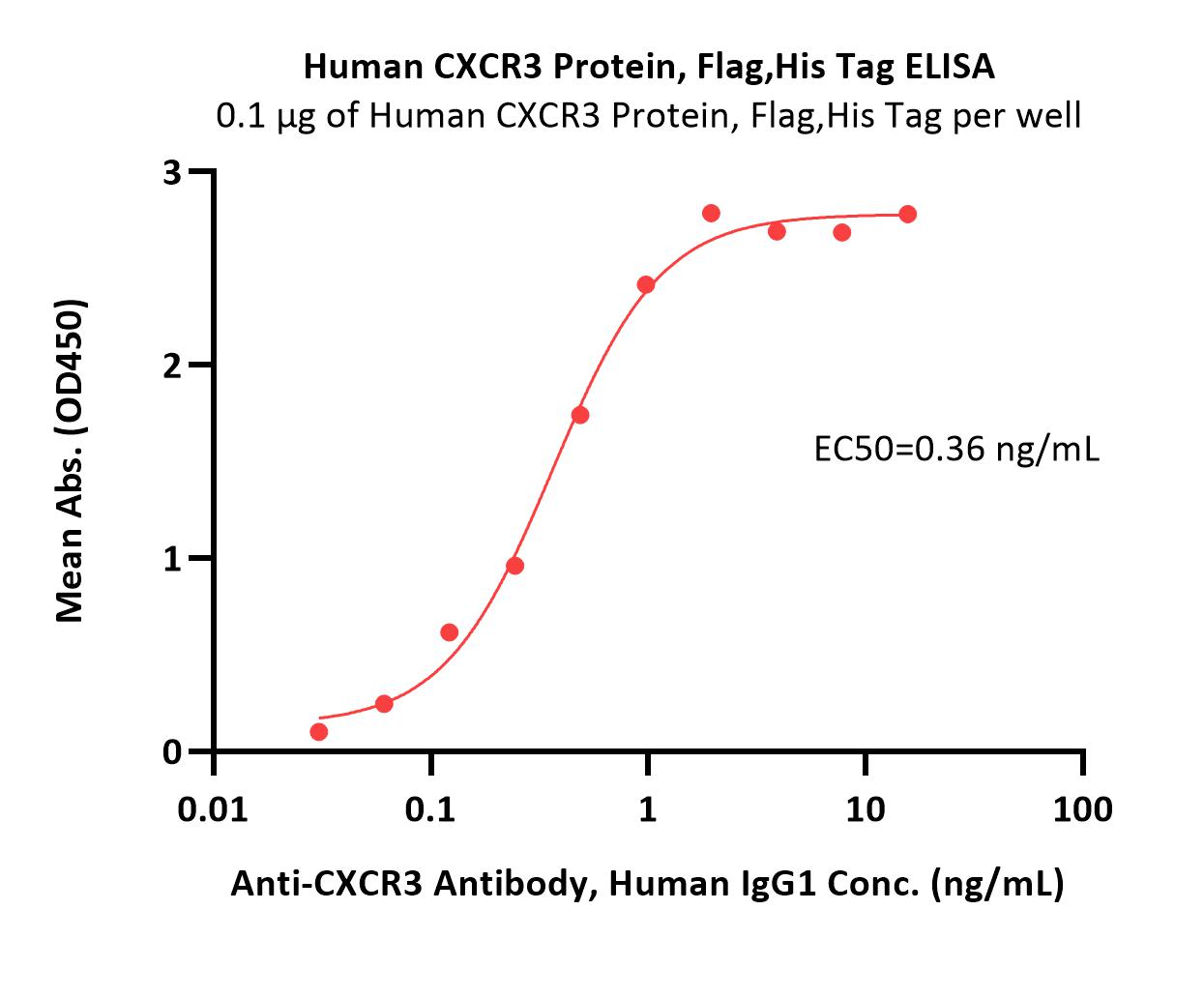分子别名(Synonym)
CD182, CD183, CKR-L2, CMKAR3, GPR9, IP10-R, Mig-R, MigR
表达区间及表达系统(Source)
Human CXCR3 Protein, Flag,His Tag (CX3-H52D5) is expressed from human 293 cells (HEK293). It contains AA Val 2 - Leu 368 (Accession # P49682-1).
Predicted N-terminus: Asp
Request for sequence
蛋白结构(Molecular Characterization)

This protein carries flag tag at the N-terminus and polyhistidine tag at the C-terminus.
The protein has a calculated MW of 43.5 kDa.
内毒素(Endotoxin)
Less than 1.0 EU per μg by the LAL method.
制剂(Formulation)
This product is not suitable for cell based experiments due to cytotoxicity of DDM.
DDM and CHS are INDISPENSABLE to keep membrane protein soluble and active, under no circumastance should you remove DDM and CHS.
DDM/CHS buffer (DC-11) is sold separately and not included in protein, and please contact us if you need the buffer.
If glycerol is not compatible to your application, remove glycerol just before immediate experiment, and NEVER store glycerol-free protein solution.
Supplied as 0.2 μm filtered solution in 50 mM HEPES, 150 mM NaCl, DDM, CHS, pH7.5 with glycerol as protectant.
Contact us for customized product form or formulation.
运输(Shipping)
This product is supplied and shipped with dry ice, please inquire the shipping cost.
存储(Storage)
Please avoid repeated freeze-thaw cycles.
This product is stable after storage at:
- The product MUST be stored at -70°C or lower upon receipt;
- -70°C for 12 months under sterile conditions.
活性(Bioactivity)-ELISA

Immobilized Human CXCR3 Protein, Flag,His Tag (Cat. No. CX3-H52D5) at 1 μg/mL (100 μL/well) can bind Anti-CXCR3 Antibody, Human IgG1 with a linear range of 0.03-1 ng/mL (QC tested).
Protocol
背景(Background)
Chemokines are proteins which induce chemotaxis, promote differentiation of immune cells, and cause tissue extravasation. Given these properties, their role in anti-tumor immune response in the cancer environment is of great interest. Although immunotherapy has shown clinical benefit for some cancer patients, other patients do not respond. One of the mechanisms of resistance to checkpoint inhibitors may be chemokine signaling. The CXCL9, -10, -11/CXCR3 axis regulates immune cell migration, differentiation, and activation, leading to tumor suppression (paracrine axis). However, there are some reports that show involvements of this axis in tumor growth and metastasis (autocrine axis). Thus, a better understanding of CXCL9, -10, -11/CXCR3 axis is necessary to develop effective cancer control.























































 膜杰作
膜杰作 Star Staining
Star Staining











